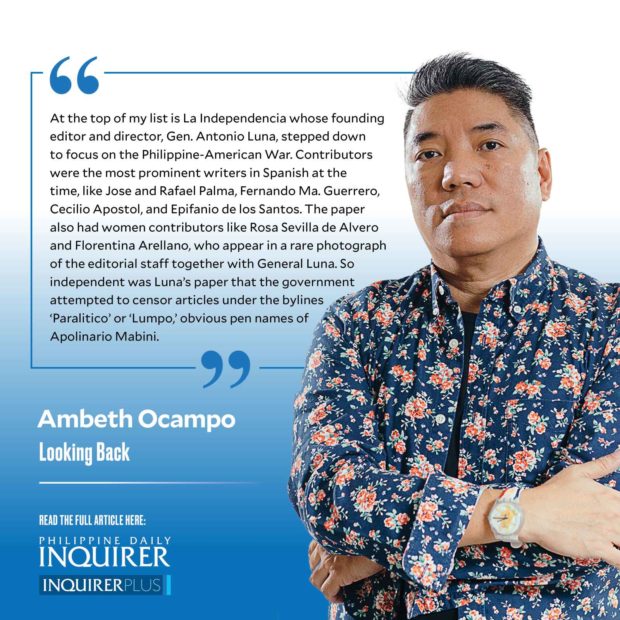Newspapers digital and physical
As an Inquirer columnist, I was given complimentary access to InqPlus, so I need not source a physical copy of the Inquirer anymore. Inquirer content is accessible to me 24/7 anywhere with a stable internet connection. I can access the Inquirer at the University of Michigan, where I am presently visiting professor at the Center for Southeast Asian Studies, or in Dubai, where I recently participated in the Emirates Literary Festival. What made me happy about this version of the online Inquirer is that it provides a thumbnail image of the entire paper version. When you click on a story, text appears in a reader-friendly version. The New York Times archive is called “Times Machine” and provides both the text as it appeared in the actual newspaper or in a reader-printer-friendly version. I presume InqPlus will eventually scan all the old issues of the Inquirer all the way back to Vol. 1 No. 1, which appeared on Dec. 9, 1985. I hope back issues will be searchable by date, author, or subject, and be downloadable as a PDF—whole or in part. This will definitely make future historians’ work much easier.
My Ateneo students use a microfilm version of the Inquirer to dig up the news on the day they were born, or an online archive that is reportedly incomplete. I already warn students that the Inquirer does not come out on Maundy Thursday and Good Friday. This annual break is not a fluke, it does not mean that the world stopped and that nothing happened on those days, there is just no record in the Inquirer.
Old Philippine newspapers have always been a source for this column, and it is a pity that most of them are not available online. My favorites are those published from 1898 to 1900 that document the high and low points of the stillborn First Republic in Malolos. At the top of my list is La Independencia whose founding editor and director, Gen. Antonio Luna, stepped down to focus on the Philippine-American War. Contributors were the most prominent writers in Spanish at the time, like Jose and Rafael Palma, Fernando Ma. Guerrero, Cecilio Apostol, and Epifanio de los Santos. The paper also had women contributors like Rosa Sevilla de Alvero and Florentina Arellano, who appear in a rare photograph of the editorial staff together with General Luna. So independent was Luna’s paper that the government attempted to censor articles under the bylines “Paralitico” or “Lumpo,” obvious pen names of Apolinario Mabini.
The first issues of La Independencia I handled were those preserved in the Lopez Museum and Library when I was a curious undergraduate student. The library had purchased the first issues of various Philippine periodicals from a collector or supplier named Braulio Francisco. After going through these, I requested to see more than the Vol. 1 No. 1 issues. That’s when I realized that La Independencia appeared shortly before El Heraldo de la Revolucion, the official government newspaper filled with laws, decrees, and official news. La Independencia seemed to be a foil to the official El Heraldo de la Revolucion and another blindly pro-government paper, La Republica Filipina. Physically handling these newspapers early on gave me an edge over those who didn’t know their worth, when 30 folded copies of La Independencia turned up at the old Heritage Art Gallery, with an assortment of old books and papers from a scrap dealer. The lot was priced at P3,000 or P100 each. A student on allowance couldn’t afford it outright, so my mentor E. Aguilar Cruz paid for it and allowed me to pay when able. All but one from this stash remains, as I sold or exchanged individual issues for other things I could not afford. One happy trade was with the late Armando J. Malay, who had two copies of the reformist paper La Solidaridad and traded one for a copy of La Independencia. At auction today, my lone copy of Solidaridad and Independencia will fetch more than the original P100 price. Those were the days.
I was drawn to the rare issues that had illustrations because most were text heavy. Advertisements were a mirror of the social and economic history of the period. Handling their brittle pages was literally touching Philippine history, sourcing column material from them was merely a bonus. Physical sometimes has an edge over digital.
Comments are welcome at aocampo@ateneo.edu





















